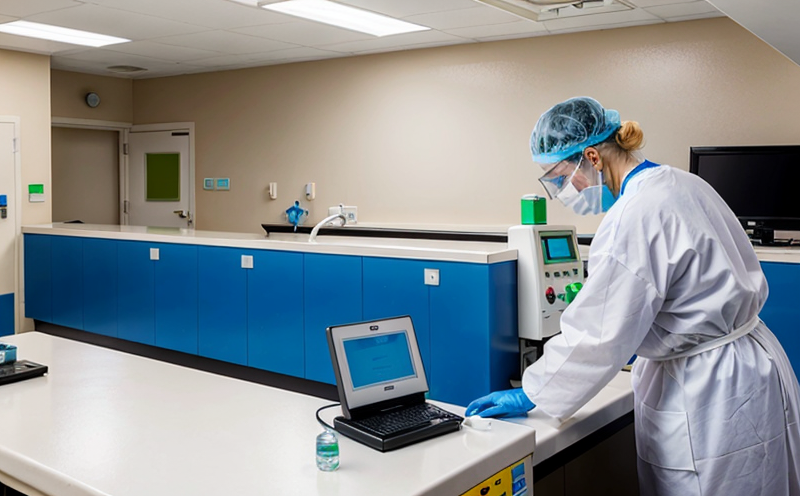Contact Plate Testing for Surface Hygiene in Wards
Contact plate testing is a crucial method used to assess surface hygiene in healthcare settings. This technique involves swabbing surfaces suspected of harboring contamination, inoculating the collected samples onto agar plates, and incubating them under suitable conditions. The purpose is to identify and quantify microorganisms present on surfaces such as door handles, bed rails, and other high-touch areas.
The primary goal of contact plate testing in hospital wards is to monitor and improve surface hygiene, which directly impacts patient safety by reducing the risk of healthcare-associated infections (HAIs). HAIs are a significant concern in hospitals, affecting patient outcomes and increasing healthcare costs. By implementing effective surface hygiene monitoring through contact plate testing, facilities can proactively address contamination issues before they escalate into infection outbreaks.
The procedure typically involves collecting swab samples from surfaces using sterile swabs, transferring the collected material to nutrient-rich agar plates (containing appropriate growth media), and incubating these plates under optimal conditions. The resulting colonies are then counted, providing a quantitative measure of microbial presence on the tested surface. This approach allows for the differentiation between various types of bacteria, fungi, and other microorganisms.
For accurate results, it is essential to follow strict protocols during sample collection and processing. Swabs should be stored at appropriate temperatures until they can be processed in a laboratory setting. Proper identification of organisms requires specialized knowledge and equipment, making it imperative for healthcare facilities to partner with accredited laboratories that specialize in this type of testing.
Contact plate testing plays a vital role in maintaining high standards of cleanliness across all areas within hospitals. By regularly performing these tests, institutions can identify problem spots early on, implement targeted interventions, and monitor the effectiveness of cleaning protocols over time. This ongoing assessment helps ensure compliance with healthcare regulations and best practices related to surface hygiene.
It is worth noting that contact plate testing serves as just one component of a comprehensive infection control strategy in hospitals. When combined with other measures such as enhanced handwashing procedures, improved environmental design features, and staff education initiatives, it contributes significantly towards reducing the incidence of HAIs.
- Benefits: Early detection of surface contamination leads to prompt action against potential sources of infection.
- Precision: Provides precise quantification of microorganisms present on different surfaces within ward environments.
Why Choose This Test
- Precision: Offers a detailed count of microorganisms present on surfaces.
- Compliance: Helps ensure adherence to relevant standards like ISO 14698-3:2005 for healthcare facilities.
Contact plate testing stands out as an effective tool due to its precision and ability to meet regulatory requirements. Its detailed output provides valuable insights into the cleanliness levels achieved during routine cleaning processes, enabling facilities to make informed decisions about necessary adjustments or enhancements.
Accurate monitoring through contact plate testing supports evidence-based practices aimed at preventing HAIs, thereby enhancing patient safety and satisfaction. Moreover, this approach fosters continuous improvement by allowing for regular assessments of surface hygiene across all areas within hospital wards.
Quality and Reliability Assurance
The reliability of contact plate testing hinges on several factors including proper sample collection techniques, appropriate growth media used in agar plates, optimal incubation conditions, and accurate colony counting methods. Accredited laboratories employ rigorous quality control measures throughout the entire process to ensure consistent and reliable results.
Quality assurance practices include validating procedures against established guidelines such as those outlined by the Clinical and Laboratory Standards Institute (CLSI) or the European Committee for Standardization (CEN). These organizations provide recommendations on optimal sampling strategies, recommended incubation times, and acceptable levels of contamination.
To maintain high standards of reliability, laboratories must also adhere to international standards like ISO 16232:2015 which specifies requirements for microbiological testing of medical devices used in healthcare settings. By following these guidelines closely, laboratories can ensure that their findings are both reproducible and comparable across different facilities.
Reliability assurance extends beyond the technical aspects to include robust data management systems capable of tracking all relevant parameters associated with each test run. This comprehensive approach ensures transparency and traceability throughout every stage of the testing process, fostering trust among stakeholders involved in surface hygiene monitoring efforts.
Use Cases and Application Examples
Contact plate testing finds application in various scenarios where ensuring high standards of cleanliness is paramount. One common use case involves regular monitoring during outbreaks when identifying potential sources of contamination becomes critical for effective containment strategies.
In addition to outbreak management, contact plate testing supports routine evaluations conducted by quality assurance teams responsible for maintaining optimal hygiene levels within hospital wards. By integrating this test into their regular inspection protocols, these teams can proactively address emerging issues before they lead to significant disruptions or adverse health outcomes.
Another compelling application lies in research settings where studying the efficacy of new cleaning agents or novel disinfection methods requires quantifiable data regarding microbial reductions achieved under different conditions. Contact plate testing provides precisely this information, offering researchers valuable insights into product performance and potential improvements needed for future iterations.





